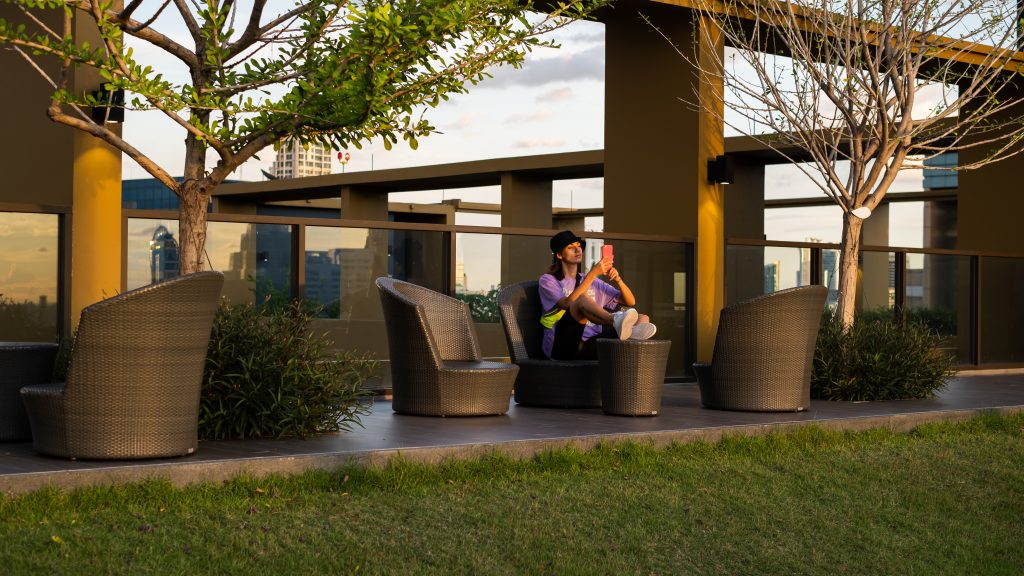The idea of outdoor living has shifted dramatically in recent years. Patios, decks, and backyards were once seen as secondary spaces—nice-to-have extensions of the home but not essential. In 2025, that mindset has changed completely. Homeowners now view outdoor areas as central to daily life, investing in features that bring people together, improve well-being, and increase property value. The rise of transforming outdoor areas into entertaining spaces has turned once-basic yards into dynamic gathering zones that rival indoor living rooms in comfort and functionality.
The shift is more than cosmetic—it reflects broader lifestyle and design trends. Families want places to socialize without leaving home. Homeowners are seeking healthier environments that allow them to recharge in natural light and fresh air. At the same time, real estate data shows outdoor amenities directly impact a home’s market value. This combination of lifestyle appeal and financial incentive explains why outdoor transformations are one of the hottest design movements of 2025.

Why Outdoor Entertaining Spaces Are So Popular
Several factors have accelerated this movement:
Lifestyle changes. After years of hybrid work and shifting routines, people spend more time at home. They want outdoor areas that act as functional extensions of their interiors—places where they can cook, host friends, or simply unwind.
Home value growth. A Business Insider report highlighted that patios and porches in new homes are at record highs, with patios included in 64% of builds in 2023 compared to just 47% in 2008. Porches also rose to nearly 70% of new homes in the same timeframe. This proves that transforming outdoor areas into entertaining spaces is not only a lifestyle trend but also an investment strategy.
Design innovation. According to Architectural Digest’s AD PRO Forecast, outdoor living design is no longer limited to furniture and landscaping. Instead, we see multifunctional layouts, integrated wellness zones, and seamless indoor-outdoor transitions dominating 2025.
Emphasis on well-being. Outdoor entertaining areas are increasingly connected to health. Spaces are designed not just for fun but also for relaxation, mindfulness, and physical activity.
Key Outdoor Entertaining Trends of 2025
1. Indoor-Outdoor Integration
In 2025, the line between indoor and outdoor spaces is blurring. Large pocket sliding doors and glass walls are common upgrades, creating an effortless transition between living rooms and patios. Designers report that nearly half of clients are now asking for these features. This integration encourages gatherings to flow smoothly across spaces, creating the sense of one large environment instead of two separate zones.
2. Outdoor Kitchens and Pizza Ovens
The outdoor kitchen remains a cornerstone of modern entertaining design. A Fixr.com industry survey found that 62% of design professionals expect outdoor kitchens to remain a top trend in 2025. Pizza ovens are especially popular, with 50% of experts identifying them as the most desired feature. These kitchens are no longer limited to simple grills—they now include beverage centers, storage, sinks, and even smart appliances designed to withstand weather.
3. Wellness-Oriented Outdoor “Rooms”
Beyond cooking and lounging, outdoor areas are becoming wellness retreats. The Times reported on “party barns” in the UK being transformed into hybrid social-wellness spaces, complete with sound healing, meditation rooms, and biodynamic wine tastings. This approach is spilling into residential yards, where homeowners design multifunctional areas for both fitness and fun. Think yoga lawns by day and cocktail patios by night.
4. Biophilic Design and Comfort-First Seating
Biophilic design—bringing nature into design planning—continues to dominate. Comfortable loungers placed under shaded trees create environments that balance refuge and prospect, satisfying our natural instincts for both safety and openness. Curved seating, mid-century modern shapes, and organic materials are on-trend, softening the look of outdoor areas while encouraging conversation.
5. Accessories that Define the Space
Outdoor rugs, made of durable recycled PET fibers, are redefining how patios feel. Instead of being stark or transitional, outdoor spaces now look curated, like true living rooms. Earthy tones and sustainable textiles anchor zones, while planters, cushions, and side tables add both functionality and personality.
6. Lighting and Fire Features
Evenings are now the most valuable time to use outdoor areas, making lighting design essential. In 2025, homeowners are layering practical and atmospheric lighting—from pathway lights to subtle hardscape LEDs. Fire features also serve as natural gathering hubs. Fire pit tables, chimineas, and fire bowls are making a comeback, offering warmth and ambiance that extends the use of outdoor areas year-round.
7. Sustainable and Climate-Resilient Materials
Homeowners are prioritizing low-maintenance, eco-friendly options. Composite decking, water-wise landscaping, and recycled outdoor furniture are no longer niche—they are mainstream. As climates become less predictable, durable and sustainable design is both practical and attractive to buyers.
How to Redesign Your Outdoor Space for Entertaining
Here’s a step-by-step approach to transform your yard into a multifunctional entertaining zone:
- Identify Your Priorities. Decide what you’ll use the space for most—hosting dinners, relaxing with family, or fitness activities.
- Plan Flow Between Indoors and Outdoors. Consider wide sliding doors or large windows to visually connect your living room with your patio.
- Invest in Key Cooking Elements. A grill is the baseline, but a pizza oven or beverage center makes the area feel complete.
- Layer for Comfort. Use seating with cushions, shade structures, and natural elements like trees or pergolas for both comfort and aesthetics.
- Create Defined Zones. Rugs, lighting, and planters help separate dining, lounging, and fitness areas without walls.
- Think Nighttime Use. Incorporate fire pits or string lighting to extend usability into the evening.
- Opt for Sustainable Solutions. From composite decking to native plants, small eco-conscious choices improve long-term value.
Why These Trends Matter
Outdoor transformations go beyond décor. They reflect a cultural shift toward prioritizing shared experiences, wellness, and connection to nature. A report by Thumbtack and Zillow found that nearly one-third of homeowners plan to invest in outdoor upgrades in 2025. Moreover, experts estimate that upgrades like patios and outdoor kitchens can deliver returns of 50% or more on resale value.
For homeowners, the benefits extend beyond finances. These spaces provide settings to build stronger family bonds, host friends in meaningful ways, and create daily routines that prioritize both fun and relaxation.
Conclusion
Outdoor living has entered a new era. In 2025, transforming outdoor areas into entertaining spaces is no longer about adding a grill or a few chairs—it’s about creating holistic environments that serve as extensions of the home. From pizza ovens and shaded seating to eco-friendly textiles and biophilic layouts, the possibilities are endless. Whether you’re planning small upgrades or a full-scale redesign, the key is to create a space that is functional, welcoming, and aligned with your lifestyle.
As this trend grows, one thing is certain: outdoor areas are no longer “extras.” They are the heart of modern entertaining and an essential part of contemporary home design.
References
- Outdoor Living Trends 2025, https://www.fixr.com
- Outdoor Living Upgrades That Boost Home Values in 2025, https://www.bhhsdaly.com
- Backyard sanctuaries top outdoor trends for 2025, https://talkerresearch.com









